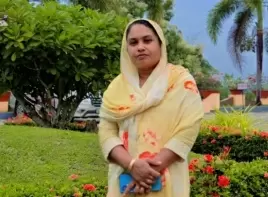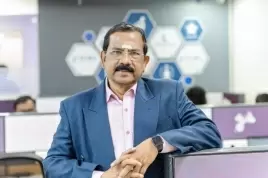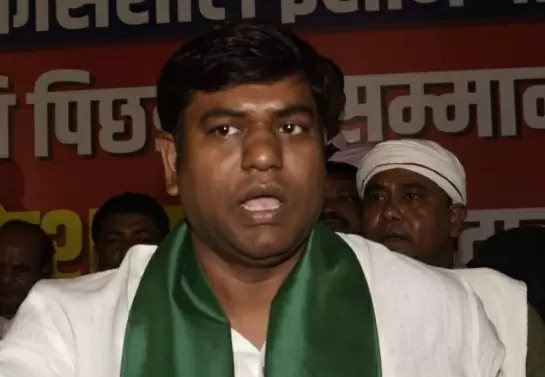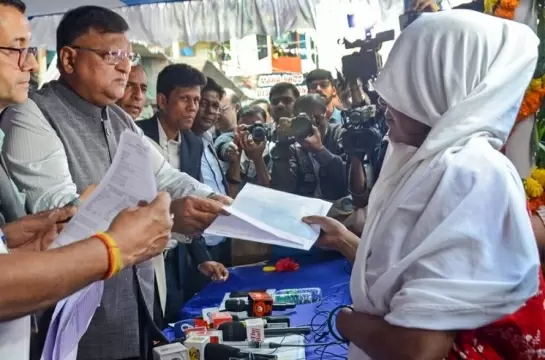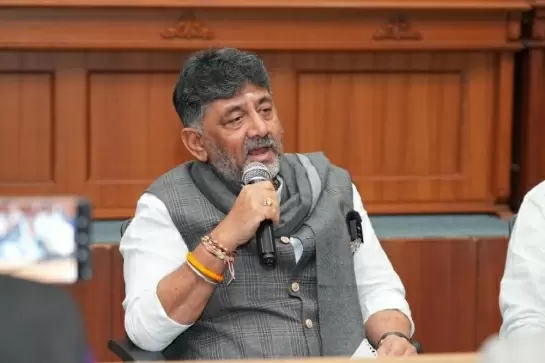The river linking project will turn out to be a tragedy of errors

24-March-2012
Vol 3 | Issue 12
The Supreme Court has exceeded its brief in asking the central government to implement the controversial river linking scheme “in a time-bound manner” and to appoint a high-powered committee to plan and implement it.
It was no less than a three-judge bench headed by Chief Justice S H Kapadia that passed this order. Last October, this very bench had cautioned that the cost of this mammoth project was its only consideration and asked for a report on this aspect. It is not known whether such a report has been received and what has prompted the apex court to propose going ahead with the scheme.
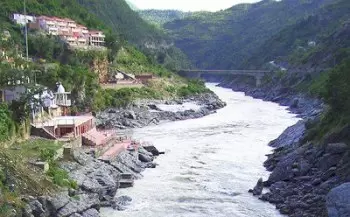 |
|
The cost of linking rivers was estimated at Rs.560, 000 crores nearly two decades ago (Photo courtesy: Infochange News & Features)
|
As Himanshu Thakkar, convenor of the South Asia Network for Dams, Rivers and People, a member representing civil society on the union water ministry’s expert committee on interlinking of rivers, has pointed out, there are several statutory, legal and procedural steps to be gone through in each of the 30 projects envisaged in the scheme.
As it is, the sharing of river waters has been a contentious issue between states, which have a greater say than the centre in the management of this resource. Between Tamil Nadu, which receives all its water from rivers originating in other states, and Karnataka, it has often reached boiling point. When Rahul Gandhi indicated that he was not in favour of such a transfer of water between basins, DMK leaders criticised him.
The court itself has stated: “A greater element of mutuality and consensus needs to be built between the states and the centre on the one hand, and the states inter-se on the other. It will be very difficult for the courts to undertake such an exercise within the limited scope of its power of judicial review and even on the basis of a Public Interest Litigation... Such an attempt may amount to the court sitting in judgment over the opinions of the experts, without any tools and expertise at its disposal.”
The linking concept dates back to the mid-19th century, when Sir Arthur Cotton, an army general turned engineer, first proposed building a series of canals throughout the nation to carry water from surplus areas to deficient ones, though mainly for navigation.
It received a boost under the eminent engineer, Dr K L Rao, who as union irrigation minister in 1972 proposed constructing a 2,640-km-long link between the Ganga in the north and the Kaveri in the south. It was then taken up by Capt M N Dastur, something of a maverick, who also thought of a “garland canal” linking Himalayan rivers to those in the south.
The garland concept was rejected because water would have to be lifted from the northern rivers to those higher up in the peninsula, which would consume an enormous amount of energy. Furthermore, constructing dams in the Himalayan belt to provide storage during the lean months was problematic because of the dangers of earthquakes in this zone.
This was precisely one of the fears over the Tehri dam, which has now been built. Environmentalists alleged that if it burst due to an earthquake – the Himalayas are a ‘young’ mountain belt in geological terms – water would reach New Delhi.
In 1982, the centre set up the National Water Development Agency to study the scheme thoroughly and prepare feasibility reports. It identified two separate components. There were 16 Himalayan rivers in the north of the country and 14 in the southern peninsula.
The agency has put the cost at Rs 560,000 crore, with the potential of irrigating 25 million hectares. That cost is still bandied about, although it would obviously have risen in these three decades. It would also install hydel capacity to the tune of 34,000 MW and help in controlling floods.
After languishing for several years, the river linking scheme got a fresh lease of life under the BJP-led National Democratic Alliance government. Suresh Prabhu, one-time union environment minister, headed a task force and was its most ardent recent supporter. He once referred to it as “the Garland of Hope” which elicited a riposte from Dunu Roy, from the Delhi-based Hazards Centre, who dismissed it as “the Garland of Hype”. The former President, Dr A P J Abdul Kalam, whose expertise does not extend to this area, endorsed it as well.
The scheme should be examined from several viewpoints. To begin with, it harks back to a megalomania surrounding such gargantuan engineering projects which are reminiscent of the Soviet era. Soviet engineers, who doubled as planners, attempted to reverse the flow of rivers, with disastrous consequences.
During the Great Depression, the US built the Hoover dam and that in the Tennessee Valley, as part of the nation’s development policy to provide employment, among other benefits. It has not built such huge dams again, while the Tennessee Valley Authority formed part of the American government’s model to modernise Third World agrarian societies.
Following the controversies over big dams on the Narmada and elsewhere in the world, the International Union for Conservation of Nature and the World Bank sponsored a World Commission on Dams. Two Indians who were among its members were the late L C Jain and Medha Patkar.
To the pleasant surprise of environmentalists, its report in 2000, titled Dams and Development: A New Framework for Decision-Making sounded a note of caution on big dams. Among the cons, the displacement of people – very often tribals and other marginalised groups -- weighed against other benefits. One has only to consider how many people will be displaced in the 30 projects contemplated in the linking of Indian rivers. In October, the Supreme Court itself asked if land had to be acquired for this purpose.
Som Pal, a former minister of agriculture and water resources, has argued: “The assumption that there is surplus water available for transfer to other basins is not correct. Most of the river basins of India are deficit ones. It may be argued that the flood waters during the monsoon can be transferred to deficit areas. But most of the existing dam reservoirs seldom get filled to cater to the given requirements of irrigation and power generation. The flooded rivers also carry a huge load of silt, which is likely to choke the channels.”
Actually, the silt is invaluable for farming in downstream states such as UP, Bihar and West Bengal, because rivers in the region carry rich nutrients. Engineers tend to think of rivers as nature’s canals which can be tamed at will. If rivers flow to the sea, as they do in peninsular India, this is seen as a ‘waste’, although any attempt to arrest this flow is fraught with hazards. Among other impacts, this can lead to the advance of salinity inland, thereby robbing coastal areas of their fertility.
According to Pal, the Brahmaputra is the only river with surplus water which can be transferred to the eastern states through Bangladesh or the narrow belt between Bangladesh and Nepal. The second route faces seismic dangers. These can be insulated against, but only at a high financial cost. He stresses that even a hairline crack in the canal or the river bank “can cause catastrophic floods”. In any event, the linking of rivers can have implications for neighbouring countries, which can self-evidently not come under the purview of the Supreme Court order.
There are environmental concerns as well. In the Ken-Betwa link in Madhya Pradesh, the first that the Supreme Court asked its special committee to examine, as many as 4,600 hectares of the Panna Tiger Reserve, out of a total of 8,100 hectares of forest land, will be submerged.
When Jairam Ramesh was the union environment minister, he ruled against the project on these grounds. It is always difficult to justify the diversion of forest land for so-called development projects. According to Thakkar, the entire river linking scheme will require 7.66 lakh hectares of land and displace 14.8 lakh people, not to mention additional land comprising 20 lakh hectares for canals and inundation of 1.04 lakh hectares of forest areas.
M S Menon, a former member secretary of the Indian National Committee on Irrigation and Drainage, has raised “the bogey of environmental impacts while transferring water from wet to dry areas, conveniently ignoring the benefits accrued by such projects within the country and abroad”.
He makes out a case for compensating donor states either by way of cash or by sharing the electricity generated, agricultural produce and so on. While he believes that this is a win-win situation, and will ensure that both states will not waste their water, the possibility of any such agreement appears remote. All states affirm that they are short of water and need it for themselves.
The biggest criticism against the interlinking of rivers is that alternatives have not been spelt out. Menon himself states that the concept of small dams is “fine, but not fully reliable for harnessing water resources”. Small dams and run-of-the-river hydel projects deserve to be given a much bigger priority, because they are cheaper, have far less adverse impacts on the environment and their management lies in local hands rather than some national agency.
Given the rapidity with which groundwater resources are being sucked dry for irrigation – which accounts for some 80% of water consumed in the country – there is a strong case for rainwater harvesting and watershed development, such as that carried out by Rajendra Singh in Alwar district of Rajasthan.
What is more, under the National Rural Employment Guarantee Scheme, labourers could regularly desilt local water bodies, while big storage schemes do the opposite.
On all counts, therefore, the interlinking of rivers deserves to be given a decent burial. All too often, it has appealed to persons in power because it is a technological fix, rather than a democratically decentralised system of delivering water. No other big country, with the possible exception of China, is going in for such massive schemes and India cannot afford to squander its resources so thoughtlessly. - Infochange News & Features







